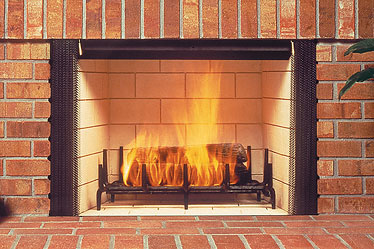Stay Warm and Safe This Fall and Winter
Autumn, with its cool, brisk breezes and shorter days, is back. For many Canadian homeowners, that means it’s time to build a fire and let its warm glow chase the chills. Perhaps it is a throwback to our cave-dwelling ancestry, but nothing seems to soothe the soul like a fire.
If you plan to enjoy your fireplace or woodstove this fall, make sure it is safe to do so. Fires caused by fireplace or chimney problems can be devastating. Regular inspection and maintenance is key in preventing one in your home. Read the following areas of concern and how you can help prevent the danger in your home.
Areas of Concern
Chimney/Flue – A chimney fire is one of the hazards when you have a fireplace that burns wood. As the name suggests, a chimney fire is a fire that starts inside the chimney or flue. They occur in chimneys that have a build-up of creosote on the walls of the flue. Creosote is exhausted with the smoke from a wood fire and can accumulate in the chimney. Even a small amount of creosote can ignite, but a larger build-up is of greater concern.
Though a fire inside a masonry or metal lined conduit designed to exhaust hot smoke may not seem like anything too serious, chimney fires pose a very real danger for two reasons. Firstly, they can generate very high temperatures and because of their location, can burn undetected for a long time, causing surrounding wood framing to catch fire. Secondly, heat and flames from a chimney fire can find a passageway to combustible building material through cracks in a flue’s lining, starting a fire inside a wall, attic space or roof.
 Firebox – In the same way cracks in the flue can allow a chimney fire to spread, ensuring the integrity of the firebox – the area where the logs burn – is of utmost importance. Though lined with material designed to take the heat, cracks in the firebox can allow flames, heat and sparks to penetrate the structure around the fireplace.
Firebox – In the same way cracks in the flue can allow a chimney fire to spread, ensuring the integrity of the firebox – the area where the logs burn – is of utmost importance. Though lined with material designed to take the heat, cracks in the firebox can allow flames, heat and sparks to penetrate the structure around the fireplace.
Fireplace Screens – The improper placement and use of fireplace screens is often cited as a cause of home fires. Sparks and embers from a ‘crackling’ fire can be propelled far and wide. Having the opening properly screened-in will keep the danger contained.
Spark Arresters – One other area of concern – outside your home – is the spark arrester, a screen that covers the flue opening and prevents dangerous embers from escaping and possibly igniting a fire on the roof or nearby.
In addition to fireplace fire hazards, the exterior chimney, cap, and flashing needs to be maintained to avoid falling debris. Exposed to the weather and subjected to regular freezing and thawing cycles, masonry and mortar can become brittle, erode, become loose and fall. Rain caps and spark arresters can also become dislodged or blown off by high winds if not properly secured.
Avoid the Danger
The only way to be sure your fireplace is safe is to have it inspected and cleaned regularly. Your inspector should evaluate the exterior of the chimney, cap/wash, spark arrester, rain cap, flashing and the condition of the brick or metal. Also check that the clearance is proper where applicable. On the interior, check that gas fire systems are working properly. For wood burning fireplaces, check the firebox and inspect the damper to make sure it is in good working order.
The services of a ‘chimney sweep’ are necessary to both clean the flue and to scan it to ensure there are no problem areas as noted above. If your fireplace burns gas, a qualified technician can make sure it is operating properly.
Repair Options
If an inspection detects cracks, loose or missing mortar, deteriorated masonry, or other hazards, these issues need to be remedied before using the fireplace. Repairs are best left to a professional. Some repairs to chimneys can be especially tricky, as the problem area detected may be impossible to get to for manual repair like cracks in the flue. In such instances, the flue can be lined with a seamless mortar-based product, metal or other material liners to provide a leak-free channel for heat, sparks, smoke and ashes to exit your home safely.
Keeping it Safe
In addition to regular inspections, how you use your fireplace can also affect its safety. By following these tips, you can reduce the risk of fire in your home:
- Never leave a fire unattended or go to bed with one burning in an open fireplace.
- Burn properly cured hardwood rather than softwood. Softwoods like spruce, pine or cedar are generally believed to give off more creosote than hardwoods like maple, oak, birch and cherry.
- Avoid having short, brief fires. Creosote build-up is greatest when the flue is cold and/or damp. Having longer fires will give it time to heat up and dry out properly.
- Keep the hearth clear of ornaments, decorations, and anything that could catch fire.
- Always use a screen to keep dangerous sparks off floors and carpets.
- Keep firewood stacks 8 m (25 ft) or more from your home.
- Clear accumulations of leaves, needles and other tree debris from your roof.
- Have operable, properly-located smoke detectors throughout the house.
Courtesy of Joe Roberto – Lighthouse Inspections
